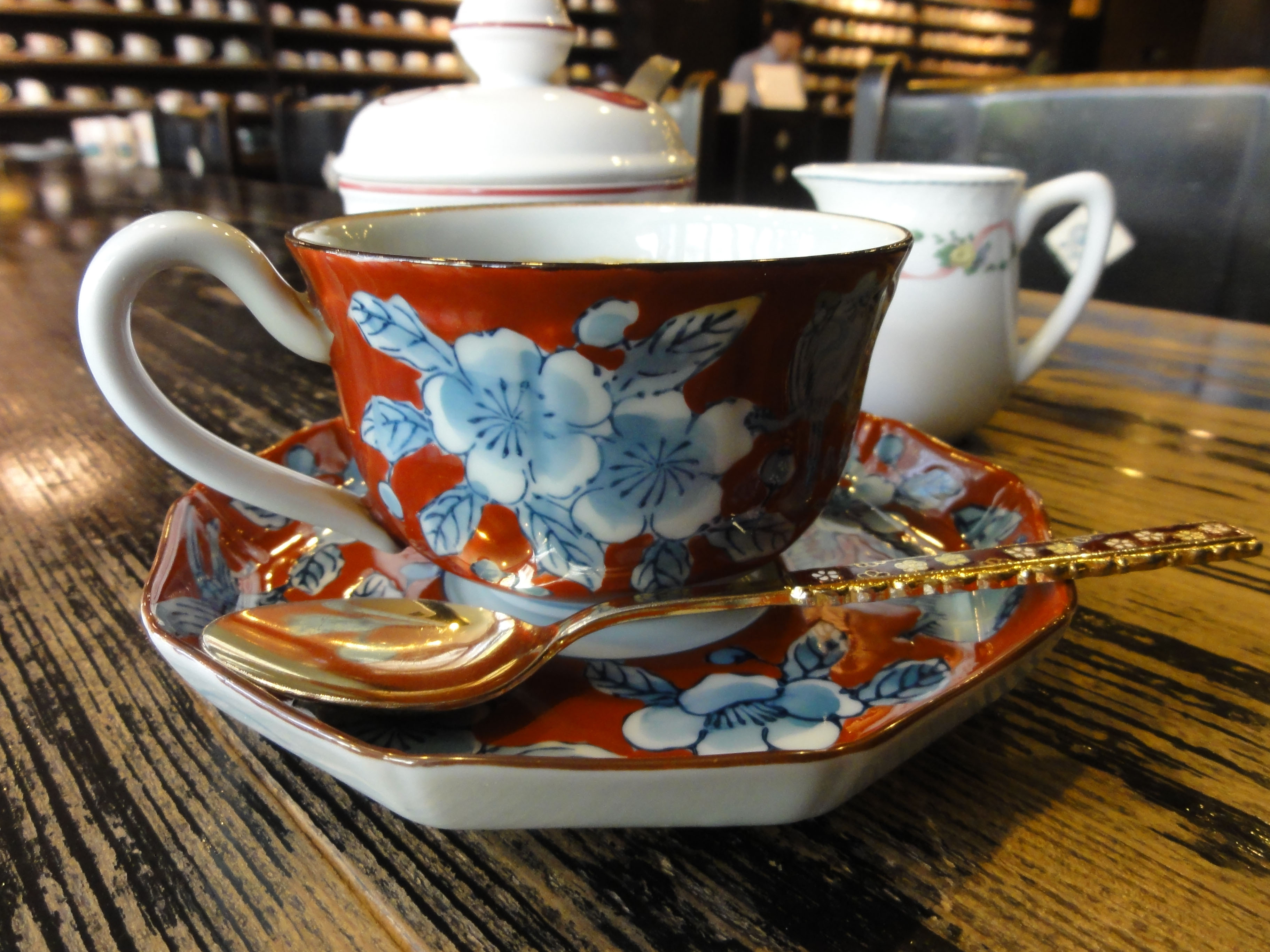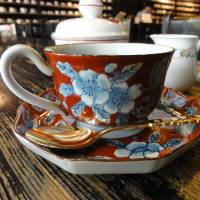Dear Alice,
Can you tell me why the heck coffee in Japan is so often served with the cup turned the "wrong" way on the saucer, which is to say with the handle on the left? This forces the right-handed customer to turn the cup 180 degrees in order to pick it up. The fancier the place, the more likely coffee is served this way, but I've experienced it even in cheap shops, and always with the spoon in front. Could this positioning be the influence of tea-ceremony practices, where you are supposed to turn the cup before drinking? Or is it copying a foreign custom that I don't know? In my country, Germany, coffee is served with the spoon at the back and the cup handle turned to the right.
Maike R., Tokyo
Dear Maike,
As luck would have it, not two days after I received your question, I walked right into the answer, or at least the beginnings of one. I was in Ibaraki Prefecture, cycling around Lake Kasumigaura, when I developed a hankering for a good cup of joe. After quite a search I found a promising shop called Coffee Brazil in a quiet part of the town of Tsuchiura. There was no one there except the elderly man who runs the place, and when he served my coffee — you guessed it — the handle was on the left.
It turns out I had stumbled onto Yasumi Yamabe, who at 84 has been serving coffee for the past 65 years. In fact, he boasted, it's quite possible he's been in the coffee business longer than anyone else in Japan. Naturally, I whipped out a pen and paper, invited him to join me and asked why he placed my cup the way he did.
"That's for the sugar," he replied. "The handle starts on the left so the customer can hold the cup steady with the left hand while stirring in sugar with the right. Once that's done, the customer turns the handle clockwise, around the top, so the handle is easy to pick up with the right hand. That's how we taught customers to drink their coffee."
Keep in mind that coffee was hardly an everyday drink when Yamabe started his career in the early postwar years. "Oh, coffee was still very much a luxury item then," he confirmed. "A cup would set you back ¥50 when a portion of oden (stewed foods) or oshiruko (sweet red-bean soup) cost only ¥5. Most people weren't familiar with coffee, so we had to educate them. Almost everyone in those days took their coffee with cream and sugar."
No one knows exactly when coffee was introduced to Japan, but the first beans were probably brought in by 17th-century Dutch traders for their own use at their trading post at Dejima, near Nagasaki. Contact with foreigners was strictly limited, so if any Japanese were able to sample their coffee, it would have only been the few merchants, translators and prostitutes allowed to visit Dejima. The oldest known account of a Japanese drinking coffee was written in 1804, in which a man named Shokusanjin Ota described boarding a foreign ship and being served a drink called "kauhii." It tasted quite unpleasant, he said, and was made by mixing sugar into water with a powder of roasted beans.
Formal imports of coffee began in 1858, and the first Japanese coffeehouse of record, the Kahiichakan in Tokyo, is said to have opened in 1888. Drinking coffee became fashionable among the intelligentsia and the upper middle class, but remained something of a rarity. Imports were halted in 1944, during the war, as coffee was branded both a zeitakuhin (extravagance) and a tekikoku inryō (enemy drink). It wasn't until after the war, and the liberalization of imports in 1960, that Japan got on its way to becoming a major coffee-drinking nation. Today Japan is the third largest importer of coffee, after the United States and Germany.
I also visited the All Japan Coffee Association, where executive director Toyohide Nishino listened to your question and nodded knowingly.
"We get that one a lot," he told me. "Very often the inquiry comes from the executive offices of a large company, with the caller saying something like, 'Our chairman is particular about manners and wants to make sure we're doing it right.' But actually there is no single accepted way to serve coffee in Japan."
Even in the coffee industry, he said, companies serve guests differently. Visitors to UCC (Ueshima Coffee Co., Ltd.)headquarters in Kobe get their coffee with the handle on the left, while at Key Coffee, in Tokyo, the handle is on the right.
I floated your hypothesis about the tea ceremony, in which the cup is placed so its front, or decorated side, faces the guest so its beauty may be enjoyed. The guest, in turn, expresses humility by turning the cup before drinking so as not to place one's lips on the most beautiful part of the vessel. Nishino found the idea interesting, but concurred with Yamabe that having the handle on the left is for convenience when adding sugar. He noted that coffee shops used to offer kakuzatō (sugar cubes), which take more effort to stir into coffee than today's standard of granulated sugar.
I was curious when the handle-to-the-left practice arose. It may well have been earlier, but the oldest reference I found was in a 1922 book titled "Seiyo-ryori no Tadashii Tabekata" ("The Correct Way to Eat Western Food"). In somewhat archaic language, Kaneko Tezuka, who was a professor at Japan Women's University, wrote that when coffee is offered after a meal it should be served in small chawan (cups) with the totte (handle) turned to the left and the saji (spoon) placed in front. Unfortunately, Tezuka didn't offer a reason for this placement, nor did she speak to its origins.
In any case, the orientation of the coffee-cup handle may well become moot as tastes and consumption patterns change. Today, taking coffee burakku ("black," without milk or sugar) is the most common preference, practiced by 38.3 percent of Japanese coffee drinkers. In addition, there is a clear shift away from genteel service and toward take-out, with convenience stores grabbing a growing share of the coffee market. Seven-Eleven, which offers self-serve coffee for just ¥100, expects to sell a whopping 700 million cups this fiscal year — and in disposable cups with no handle at all.




